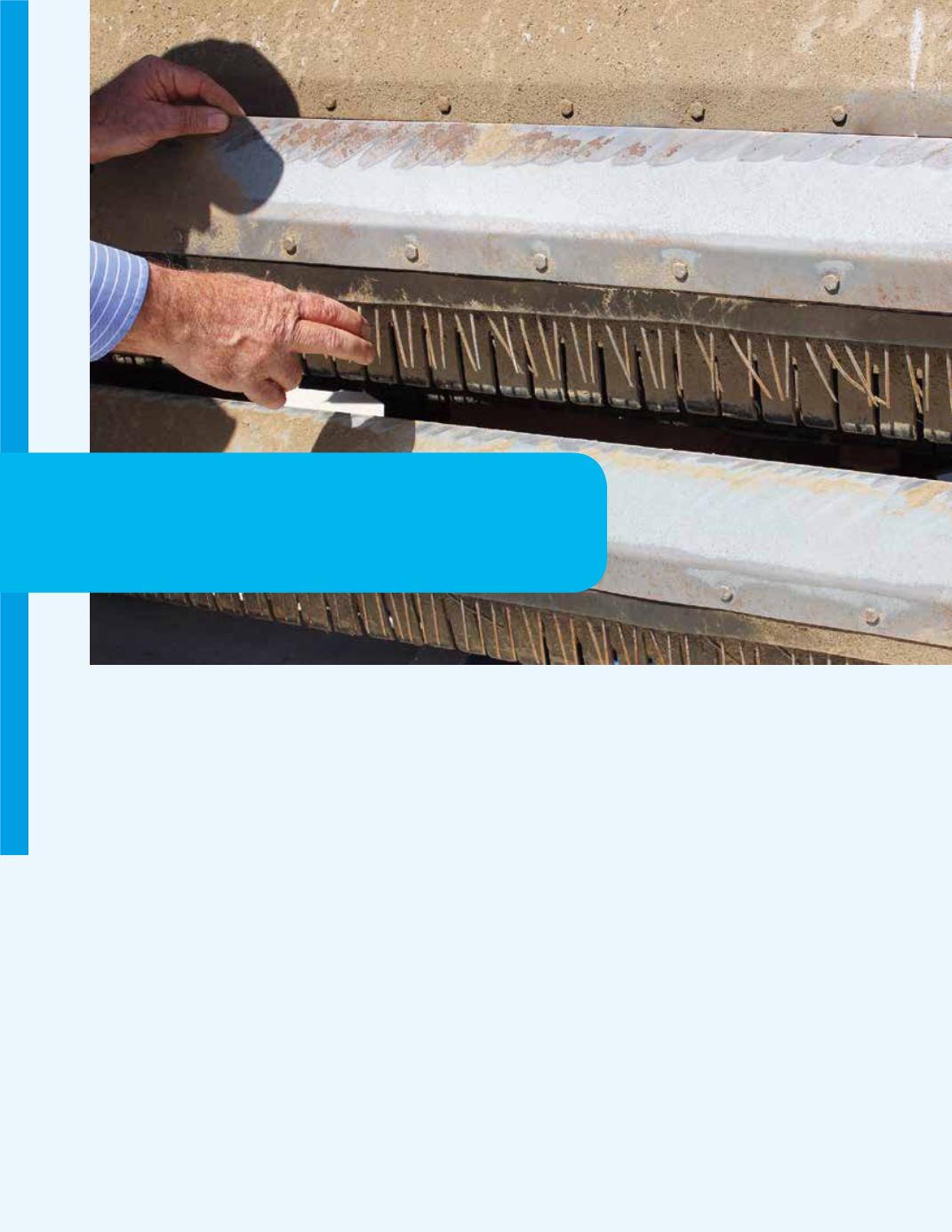
32
Almond Facts
MAY | JUNE 2017
IN YOUR ORCHARD
Low-Dust Equipment
Keeps Harvest Going
Running a pickup machine while nearby schools were in session used to be impossible. The dust from
harvesting operations that ranged from one-quarter-mile to one mile away from roads leading to the
schools was enough to put the safety of people driving to school or in school buses at risk.
Some growers feel it wouldn’t be responsible to pick up
almonds with an old harvester when school’s in session
because the dust could blow in that direction.
Technical, Financial Assistance
Low-dust harvest equipment can be seen working in
the field, but often perceived as too expensive. Trent
Goehring, with equipment dealer West Kern Machinery,
explains that growers should ask about the Natural
Resources Conservation Service (NRCS) Environmental
Quality Incentives Program (EQIP), which provides
technical and financial assistance to almond and walnut
growers who upgrade to harvest equipment shown to
reduce particulate matter (dust).
The funds that NRCS provides may bring the price
in alignment with budgets so growers can afford new
equipment. Owners of a low-dust-emission harvester say
the amount of dust that comes out is minimal; it produces
at least 75 percent less dust than old harvesters. Growers
can operate without affecting traffic, which creates a safer
environment, reducing the particulate matter that goes
into the air.
“Being proactive on dust control is a benefit for all
growers, better to be ahead of the state regulating a
timely harvest,” said Dan Clendenin,
Blue Diamond
member-grower. “Switching to a low dust system has
been costly for small growers but with the updated
NRCS incentive and with new acreage coming into
production next year, updating our older machine will be
an excellent investment. Worker safety and being a good
neighbor by cleaning the air at harvest time will show
our commitment to being good stewards of the resources
that provide for us all.”


